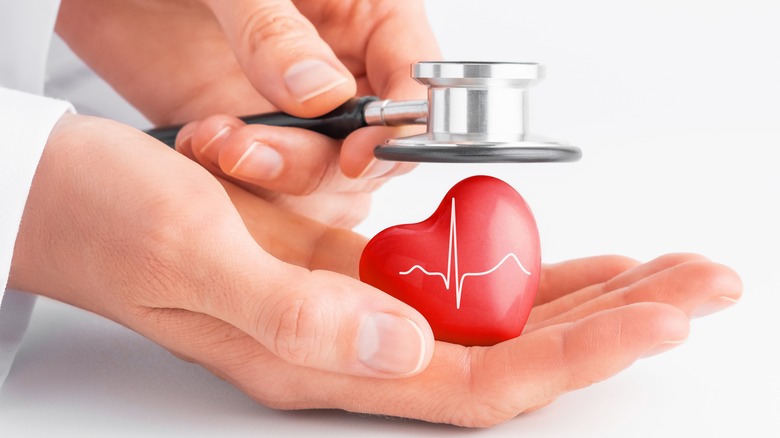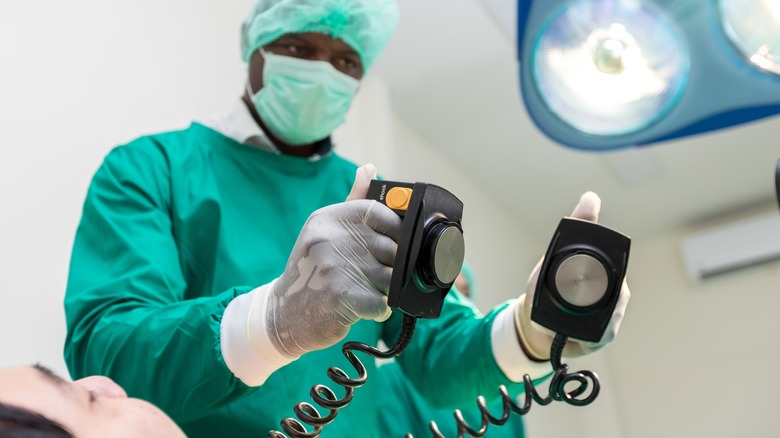Commotio Cordis Explained
As the Buffalo Bills took on the Cincinnati Bengals Monday night, fans witnessed football player Damar Hamlin's sudden collapse during the game's first quarter after tackling an opposing team member (via CBS News). Currently in critical condition, Hamlin's uncle issued a public statement on Tuesday explaining that Damar's heart had stopped during the game, as well as a second time while hospitalized. The abruptness of Hamlin's medical emergency now has physicians who have been following the story in the media pointing to a rare condition — known as commotio cordis — as the explanation, reports NPR.
First detected as early as the 18th century amongst workmen who had suffered chest injuries, the last 20 to 30 years have seen cases of commotio cordis primarily in association with sports, according to 2012 research published in Circulation: Arrhythmia and Electrophysiology. With just around 24 cases reported annually, commotio cordis is considered to be an extremely rare condition (UNC Health Talk). UNC Health cardiologist Dr. Christopher Kelly explains via UNC Health Talk that the condition occurs as a result of chest trauma that sends additional electric currents through the heart and disrupts your normal heart rhythm.
Commotio cordis treatment and prevention
"Essentially, you get a large blow to the chest at just the wrong spot at just the wrong moment, which results in a sudden arrhythmia (irregular heart rhythm) that can be fatal," Dr. Kelly tells UNC Health Talk. Dr. Kelly goes on to explain that immediate defibrillation is required to restore one's normal heart rhythm while issuing CPR in the meantime — both of which Hamlin received while on the field, NPR Reports. Time is of the essence, Dr. Kelly emphasizes, stating that the outcome is often better the sooner emergency care is given to the patient.
Some health experts have encouraged sports organizations to implement preventative measures to reduce the chances of death from commotio cordis amongst athletes (per NPR). Such suggested measures include teaching bystanders to recognize signs of the condition and how to effectively intervene — as well as making electric shock medical devices known as AEDs readily accessible on-site. On Wednesday, The Buffalo Bills tweeted an update to fans on the status of their teammate's condition, stating, "Damar remains in the ICU in critical condition with signs of improvement noted yesterday and overnight. He is expected to remain under intensive care as his health care team continues to monitor and treat him."


